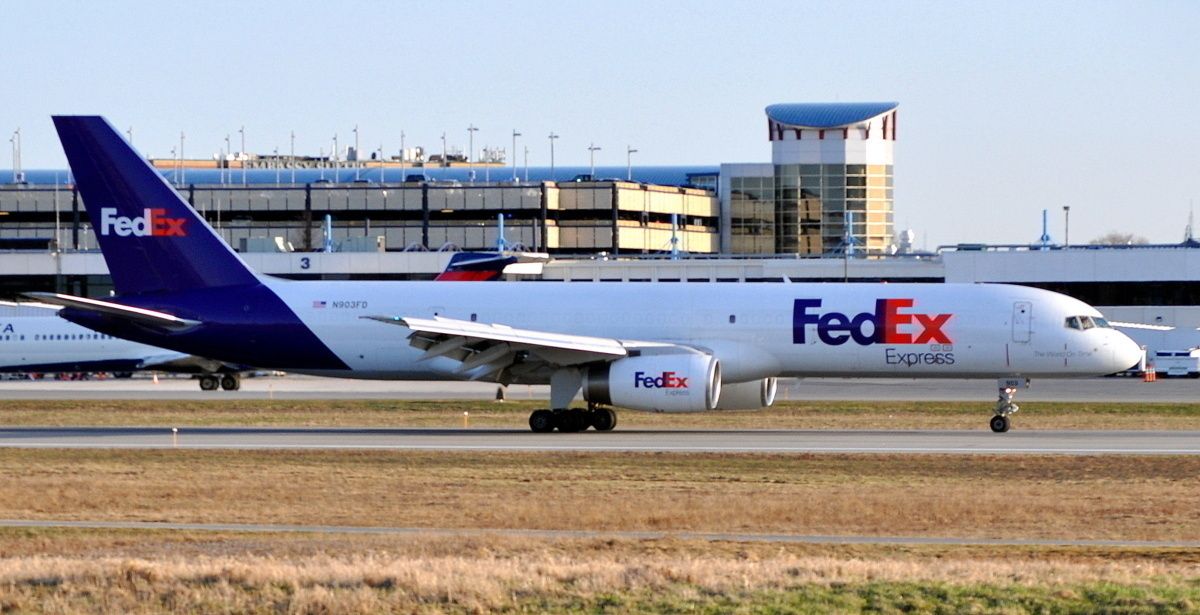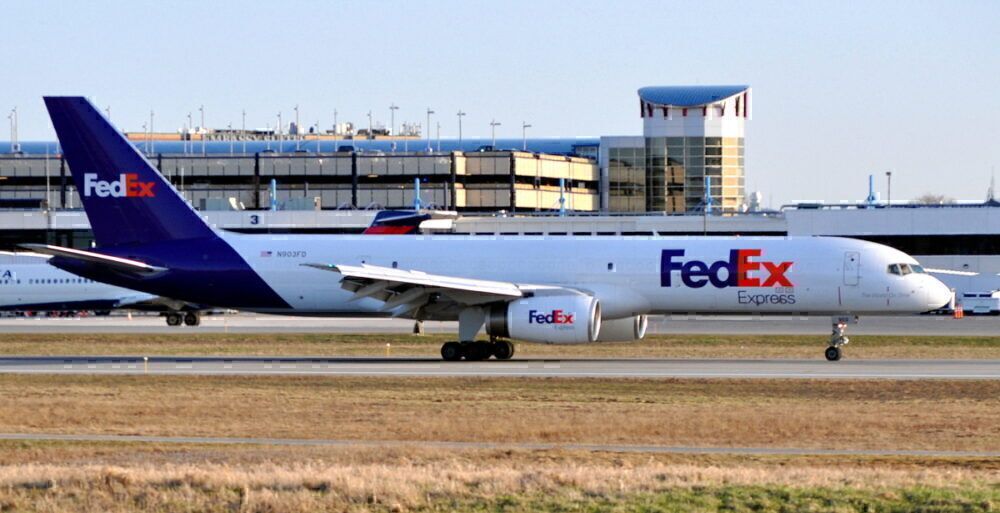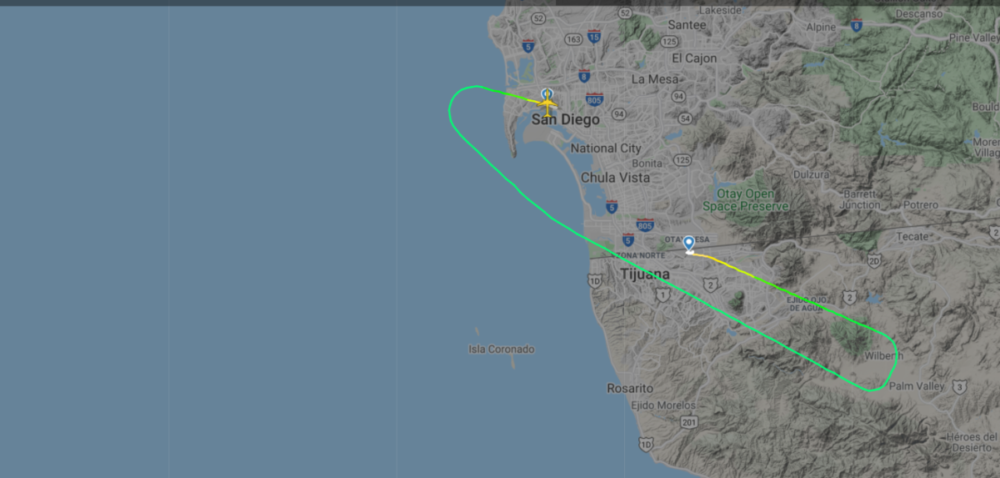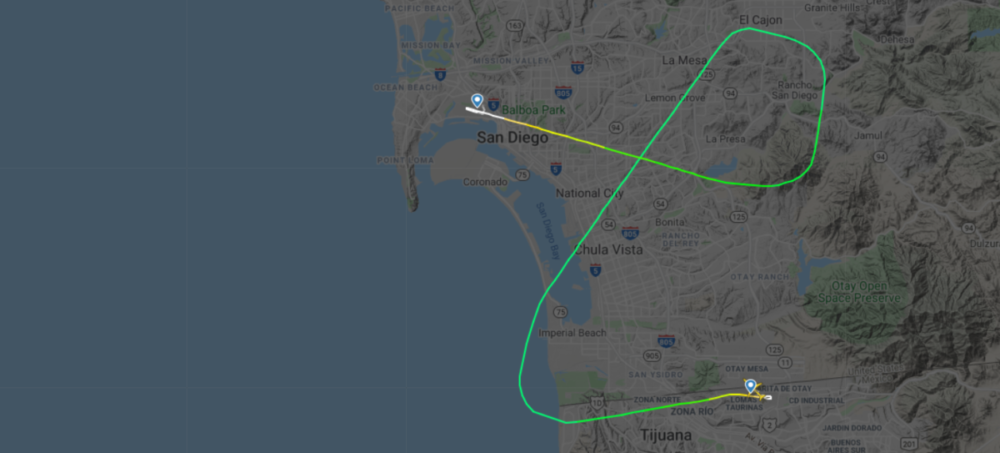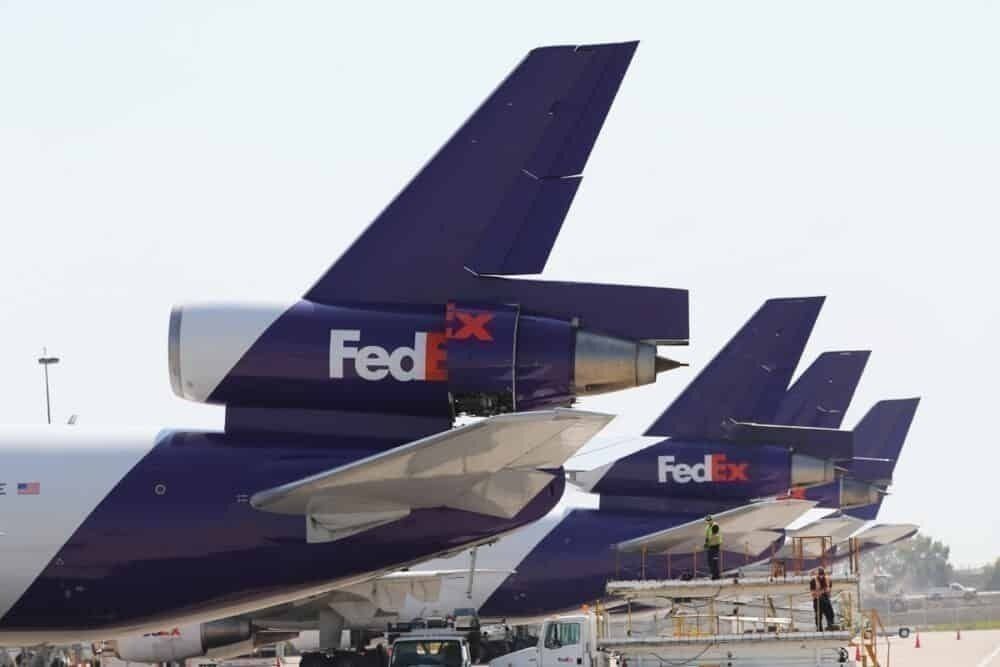FedEx is flying one of the shortest daily jet routes globally, San Diego to Tijuana - a flight of only 18 miles. Why does the airline operate this flight? And how does it work? Let's explore
What is this flight?
Brought to the world's attention by One Mile At A Time, FedEx operates a daily route between the two cities with a Boeing 757-200 (freighter conversion), with the plane taking off from San Diego and returning in the evening full of cargo.
On its outbound run, flight FX70, the plane takes off out of San Diego, performs a complete arc turn to the south over mission beach before heading towards Tijuana. It then flies over the city, heading deep into Mexico before committing a turn back to the west to line up with the runway. It lands at the airport that is very close to the US border.
On its inbound flight back to the US, flight FX69, the plane takes off from the airport into the west, flying parallel to the border before crossing over the sea. It then cuts an s-figure over the southern California landscape before landing back at the airport.
The FedEx aircraft never flies over 5,000 feet, and the whole journey can take around 20 minutes on average each way.
Why is FedEx operating this short flight?
Looking at a map, you might realize that Tijuana and San Diego are very close to each other. As the crow flies, they are 18 miles away from each other. Why would FedEx use an aircraft to transport cargo between these two destinations when a truck would suffice?
The flight only started back on March 2nd of this year; thus, we can believe that this service is only due to the current market conditions and border closures. Likely, the current restrictions between Mexico and the United States would not facilitate the easy transfer of cargo.
In the best of times, the border crossing can take up to ten hours, and likely FedEx saw this as an opportunity to significantly speed up its transfer of cargo between these two countries - at the cost of some jet fuel and environmental concerns.
"The latest move by Customs and Border Protection to slow traffic from Mexico into the US has caused border traffic jams stretching for miles and waits to exceed 10 hours for those crossing at the San Ysidro Port of Entry." - LA Times in August.
Plus, if FedEx already has the plane and the pilots on standby in San Diego, it wouldn't be much effort at all to fly over to Mexico to complete the route network for two or three hours. The red tape would be less, and Fed Ex can ensure that its crews are safe.
What do you think about this news? Let us know in the comments.

